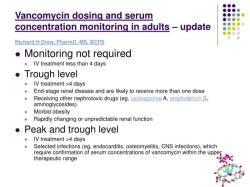What is the recommended dosage of gemcitabine?
The recommended dosage of gemcitabine can vary depending on the type of cancer being treated, the specific treatment regimen, the patient's overall health, and other individual factors. Gemcitabine is a chemotherapy drug used to treat various types of cancer, including pancreatic cancer, lung cancer, and breast cancer. It is typically administered intravenously by a healthcare professional. Here are some general dosage guidelines for gemcitabine:
Pancreatic Cancer:
- In the treatment of pancreatic cancer, a common starting dosage is 1,000 mg per square meter of body surface area (mg/m²). This is typically given as an intravenous infusion over a 30-minute period once a week for several weeks, followed by a week of rest.
Lung Cancer:
- For non-small cell lung cancer, gemcitabine may be used in combination with other chemotherapy drugs. The dosage can vary, but a typical regimen might involve gemcitabine at a dosage of 1,000 mg/m² given on days 1, 8, and 15 of a 28-day cycle.
Breast Cancer:
- In breast cancer treatment, gemcitabine is sometimes used in combination with other chemotherapy agents. Dosages may vary based on the specific treatment plan.
Other Cancers:
- The dosage of gemcitabine can vary widely for other types of cancer. The treatment plan will be determined by the oncologist based on the individual patient's condition.
It's important to note that gemcitabine is administered by healthcare professionals, and the dosage and treatment schedule are determined by the oncologist. Gemcitabine can have side effects, and the healthcare team will closely monitor the patient's response to treatment and may adjust the dosage or treatment plan accordingly.
Patients and their families should have open communication with the healthcare team to discuss treatment options, potential side effects, and any questions or concerns. This information is meant to provide a general overview, and the specific details of treatment can vary depending on the individual patient and their medical condition.
Determining the Recommended Dosage of Gemcitabine
The recommended dosage of gemcitabine is based on the patient's body weight and surface area. It is also important to consider the patient's overall health, performance status, and other medical conditions.
The standard dose of gemcitabine for most cancers is 1000 mg/m² administered intravenously (IV) over 30 minutes on Days 1 and 8 of every 21-day cycle.
However, the dosage may be adjusted depending on a number of factors, including:
- The patient's response to treatment
- The patient's side effects
- The patient's renal function
- The patient's other medical conditions
Dosage Guidelines and Regimens for Gemcitabine Treatment
Gemcitabine can be administered as a single agent or in combination with other chemotherapy drugs. The dosage and regimen of gemcitabine will vary depending on the type of cancer being treated and the other drugs being used.
Some common gemcitabine-based regimens include:
- Gemcitabine and cisplatin for pancreatic cancer
- Gemcitabine and paclitaxel for breast cancer and non-small cell lung cancer
- Gemcitabine and carboplatin for ovarian cancer
- Gemcitabine and capecitabine for colorectal cancer
Personalized Dosage Adjustments in Gemcitabine Therapy
It is important to note that the recommended dosage of gemcitabine is just a starting point. The dosage may need to be adjusted based on the patient's individual response to treatment and side effects.
For example, the dosage may be reduced if the patient experiences severe side effects. The dosage may also be increased if the patient is not responding well to treatment.
Monitoring and Managing Side Effects with Gemcitabine
Gemcitabine can cause a number of side effects, including:
- Myelosuppression (low blood cell counts)
- Peripheral neuropathy (numbness and tingling in the hands and feet)
- Nausea and vomiting
- Diarrhea
- Fatigue
- Hair loss
The healthcare team will monitor the patient for side effects and provide supportive care as needed. For example, the patient may need to receive blood transfusions or growth factors to manage myelosuppression. The patient may also need to take medication to manage nausea and vomiting or diarrhea.
Collaboration Between Patients and Healthcare Providers for Dosage Decisions
It is important for patients to collaborate with their healthcare providers to make decisions about gemcitabine dosage. Patients should discuss their individual needs and concerns with their healthcare providers.
Healthcare providers will take into account all of the relevant factors when determining the recommended dosage of gemcitabine for each patient. This includes the patient's body weight and surface area, overall health, performance status, other medical conditions, response to treatment, and side effects.
By working together, patients and healthcare providers can ensure that patients receive the optimal dosage of gemcitabine to maximize their chances of success.












